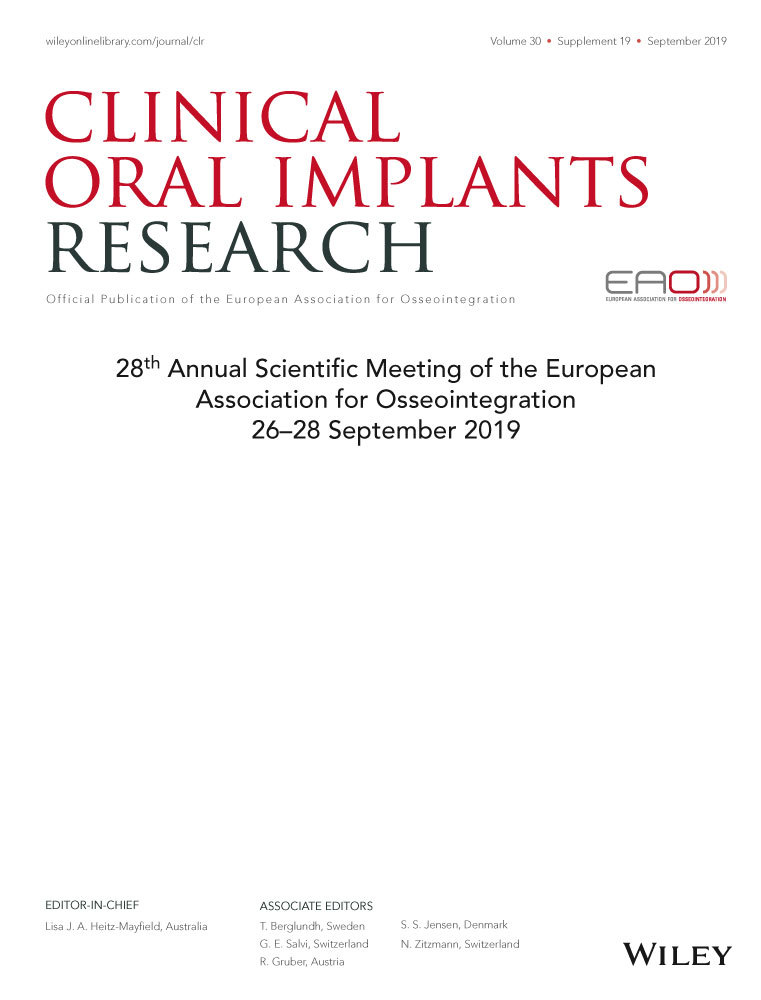Evaluation of 30∫ AND 45∫ angled prosthetic abutments in zygomatic implants: Analysis of finite elements
15737 Poster Display Clinical Research – Prosthetics
Background
The treatment of severely reabsorbed maxilla through osseointegrated implants is currently a major challenge in the Implantology. The use of zygomatic implants is considered a safe and effective treatment for this situation. The palatalized emergence of zygomatic implants often causes discomfort and difficulty in plaque control from the patients. The use of angled prosthetic abutments is necessary to compensate the angulation of zygomatic implants.
Aim/Hypothesis
The objective of this study was to evaluate two different prosthetic components, 30∫ and 45∫ angled prosthetic abutments in zygomatic implants through a finite element analysis. The distribution and tension value in the peri-implant regions and in the implant prosthetic abutments interface were eval
Material and Methods
For the study, a 3D model of an atrophic maxilla made from a Cone Beam Computed Tomography (TCFC) was developed and finite element analysis was performed with the aid of specific software. Two groups were evaluated- Group 1- atrophic maxilla with 2 zygomatic Grand Morse implants with 2 angled 30∫ mini abutments and 4 Grand Morse implants with 4 mini abutments (Neodent®, Curitiba, Brazil) + Group 2- atrophic maxilla with 2 zygomatic Grand Morse implants with 2 angled 45∫ mini abutments and 4 Grand Morse implants with 4 mini abutments (Neodent®, Curitiba, Brazil). The abutments were joined with a titanium bar type V, with 12 mm cantilever. Load of 100N was applied perpendicularly to the bar. The results were evaluated in relation to- von Mises stress, maximum and minimum principal stress and deformation.
Results
Regarding the distribution of tension on the bone, it was observed that both groups presented mean tensions distribution with higher peaks in the distal regions of the bone crest of the zygomatic implants but did not exceed 5Mpa. Regarding the distribution of tension on the implants, there was a higher tension in the disto-palatal area of the zygomatic implants, values of the peaks of the von Mises tensions of 30Mpa were obtained in both groups. The tension on the 30∫ angled mini abutments reached 25Mpa and 30Mpa in the 45∫ mini abutments. The prosthetic screws of both groups presented low tension levels, except for the 30∫ angled mini abutment passing screws that had peaks of 16Mpa.
Conclusion and Clinical Implications
A similar biomechanical behavior was observed in groups 1 and 2. The tension in the peri-implant regions and in the implant prosthetic interface was very similar in both groups. It presented not significant levels for a remodeling process to begin.




